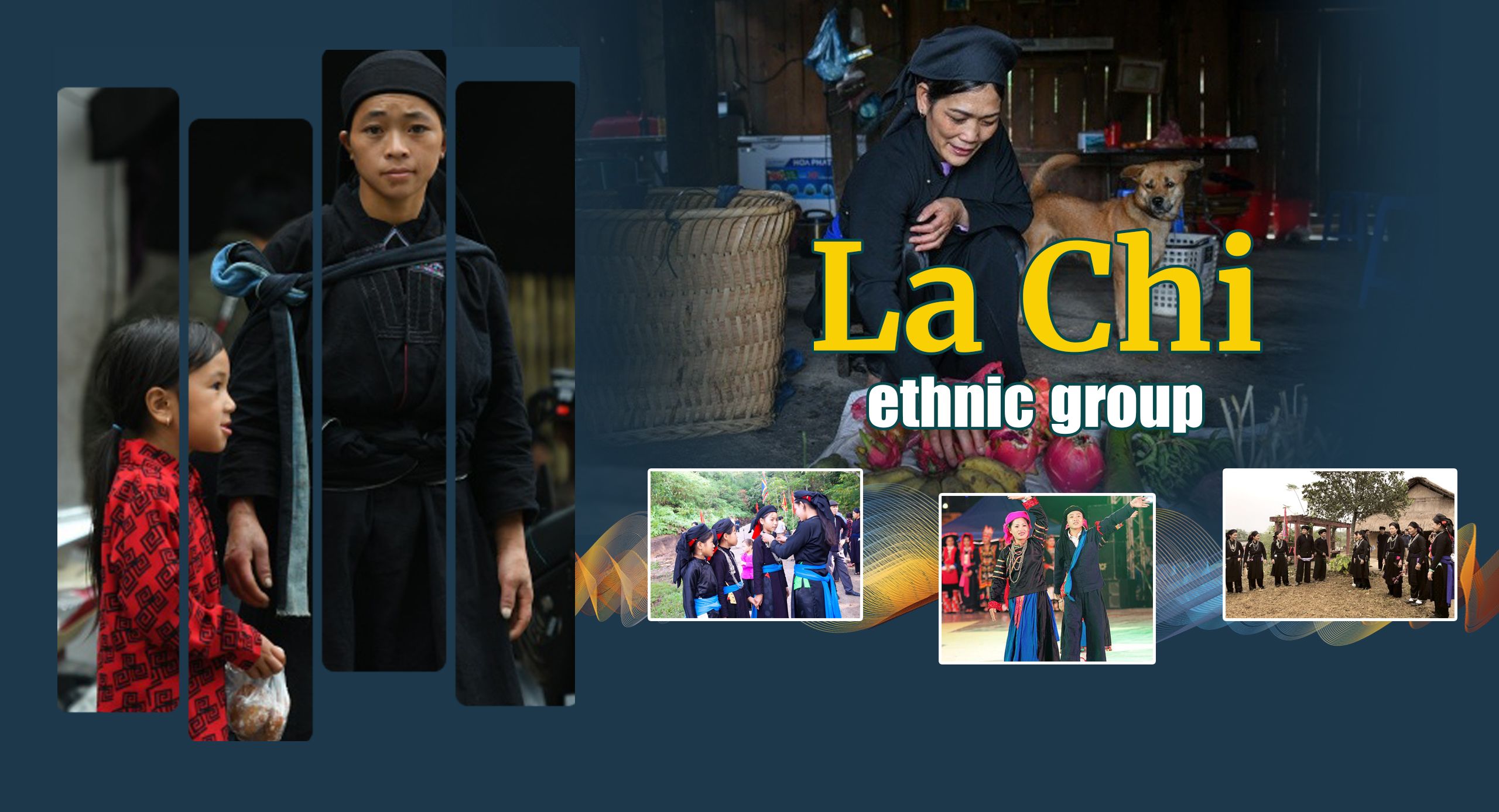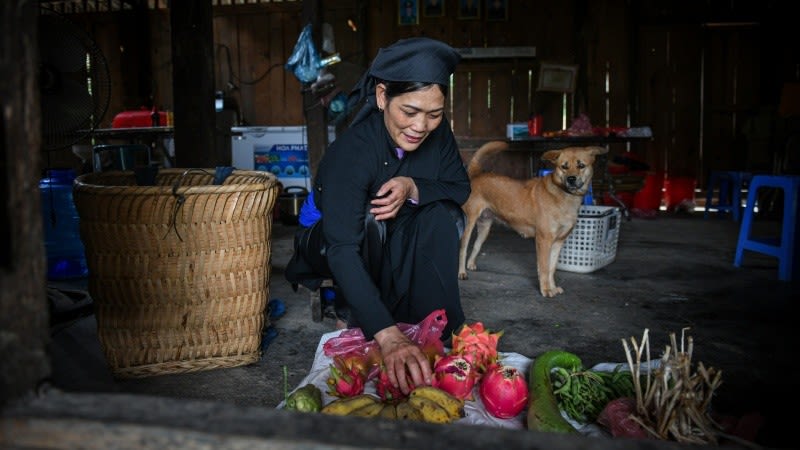
The La Chi people have lived in Vietnam’s northern mountainous region for a long time. They are currently residing mainly in the four communes of Ban Phung, Ban Diu, Ban Pang, and Ban May in Xin Man District; as well as Hoang Su Phi District and Bac Quang District in Ha Giang Province.
1. Historical origin
The La Chi ethnic people have lived in the northern mountainous region of our country for a long time. Except for the Lung family, who are originally Nung people that migrated from Yunnan Province China to Vietnam about 100-120 years ago, and the Vuong family, who are originally Chinese people who came to Vietnam not long ago, most of the remaining La Chi people are considered to be original residents of Vietnam.
2. Geographic distribution
Currently, most of the La Chi people in Ha Giang reside in four communes in Xin Man District: Ban Phung, Ban Diu, Ban Pang, and Ban May; as well as Hoang Su Phi District and Bac Quang District.
Some of them reside in the districts of Dong Van, Meo Vac, Yen Minh, Quan Ba, Bac Me, and Vi Xuyen, as well as Ha Giang City. In Ban Diu Commune, Xin Man District, Ha Giang Province, the La Chi people reside together with the Tay, Dao, Nung, and H'Mong ethnic groups.
3. Population, language
- Population: According to the 2019 Survey of 53 ethnic minorities, there are 15,126 La Chi ethnic people in Vietnam, including 7,523 men and 7,603 women. They live mainly in Ha Giang Province and Lao Cai Province.
- Language: Currently, in some localities, La Chi people have almost completely forgotten their mother language. Many people only speak Nung or Dao languages, which belong to the Kadai language group and have similarities to the La Chi ethic language in terms of words and pronunciation.

La Chi ethnic group (Photo: Thanh Dat)
La Chi ethnic group (Photo: Thanh Dat)
4. Main features
- Traditional social institutions: The La Chi family is a patriarchal. The father controls everything, from production and marriage to relationships with neighbours. The family is a common economic unit under the management of the father or the eldest son when the father gets older.
- Religions and beliefs: La Chi people believe that each human being has 12 souls, with the two most important souls living in the two shoulders. The La Chi people worship their ancestors for three generations from their fathers to great-grandfather. The La Chi people organise and manage their religious activities quite closely.
- Housing: The La Chi live in partially stilted houses. The ground floor features the kitchen while the stilted area hosts the main living space of the family. The house has a staircase. The stilted area consists of three compartments and is about 6m wide and 7m long.
- Clothing: A traditional set of costume of La Chi women includes scarf, shirt, bib, skirt, belt, handbag, bracelet, earrings and necklace. La Chi women in Nan Xin Commune, Xin Man District, Ha Giang Province, still wear this full set. La Chi men's clothing includes headscarf, long shirt, pants, and bag.
- Diet: Rice is the main food of La Chi people. When cooking rice, people boil rice in a pan, when the rice is almost cooked, they pour it out and steam it. The typical dishes of La Chi people are dried buffalo skin and sour marinated meat.
Wine is a common offering and beverage in the daily life of La Chi people. The La Chi people smoke with a pipe.
- Education: According to the 2019 survey on 53 ethnic minority groups, the rate of La Chi ethnic people aged 15 years and over who can read and write is at 64.8% while the net attendance rate for children of primary school age is 100.4%, junior secondary school age is 87.9%, and senior secondary school age is 39.1%. The percentage of out-of-school children is 17.9%.
5. Economic conditions
- Cultivation: Farming is still the main way of living of La Chi people. The people grow both sticky rice and plain rice. There are three varieties of plain rice: ‘kim phai tho’ (long-grained rice, which is good for cooking but low productivity), ‘kho ti tung’ and ‘kho ta ta’, in which, the latter has higher productivity, so it has now become the main rice variety for farming. Meanwhile, sticky rice has two varieties, ‘peo nhi nhi’ and ‘peo y lo’, which are so aromatic and delicious that they are is grown mainly for use on holidays and Tet (lunar New Year) festival.
Tea has been a valuable commodity of La Chi people since the 1990s. Fish farming is a new economic activity and has become more popular among La Chi ethnic community.
- Breeding: Cattle and poultry raising of buffaloes, horses, goats, pigs, chickens, and ducks is quite developed in La Chi ethnic communities. In addition to contributing to increase income for people, it is also used as a pulling force and as offerings in rituals.
- Handicrafts: The weaving craft is still practiced among La Chi ethnic group, however, it is not as developed as it used to in the past. The knitting craft is well developed. La Chi ethnic people knit household items such as mats for drying rice, pots for storing rice, and bags for transporting rice from the field to home. In addition to knitting household items, the people also knit handicrafts for weddings.